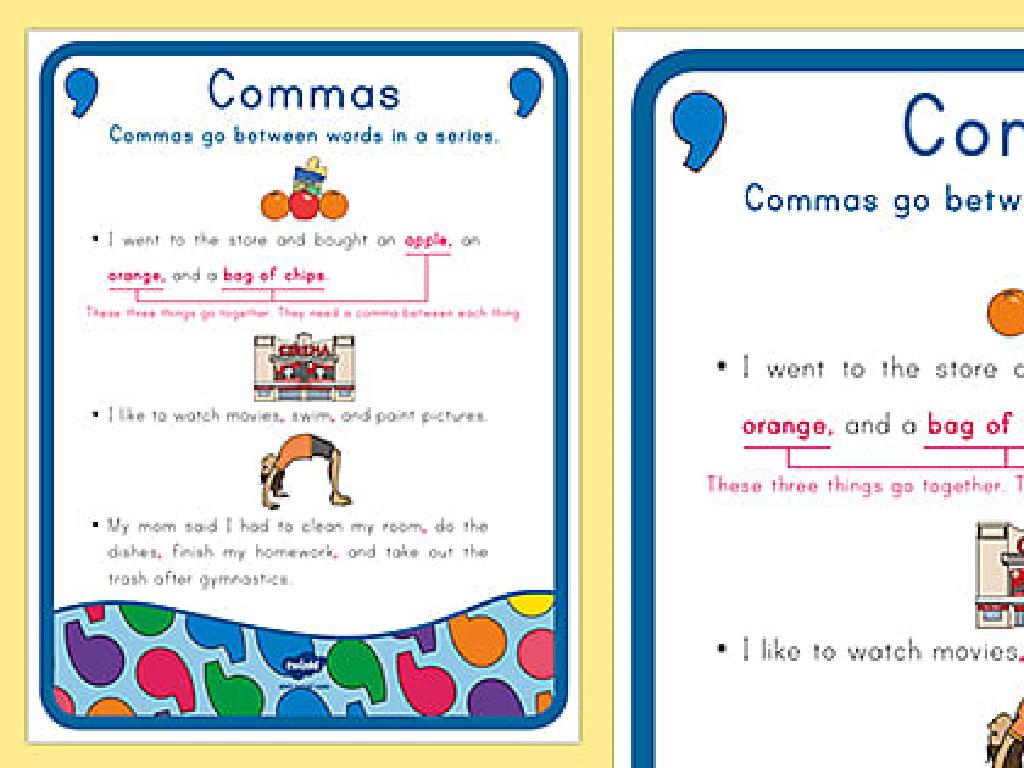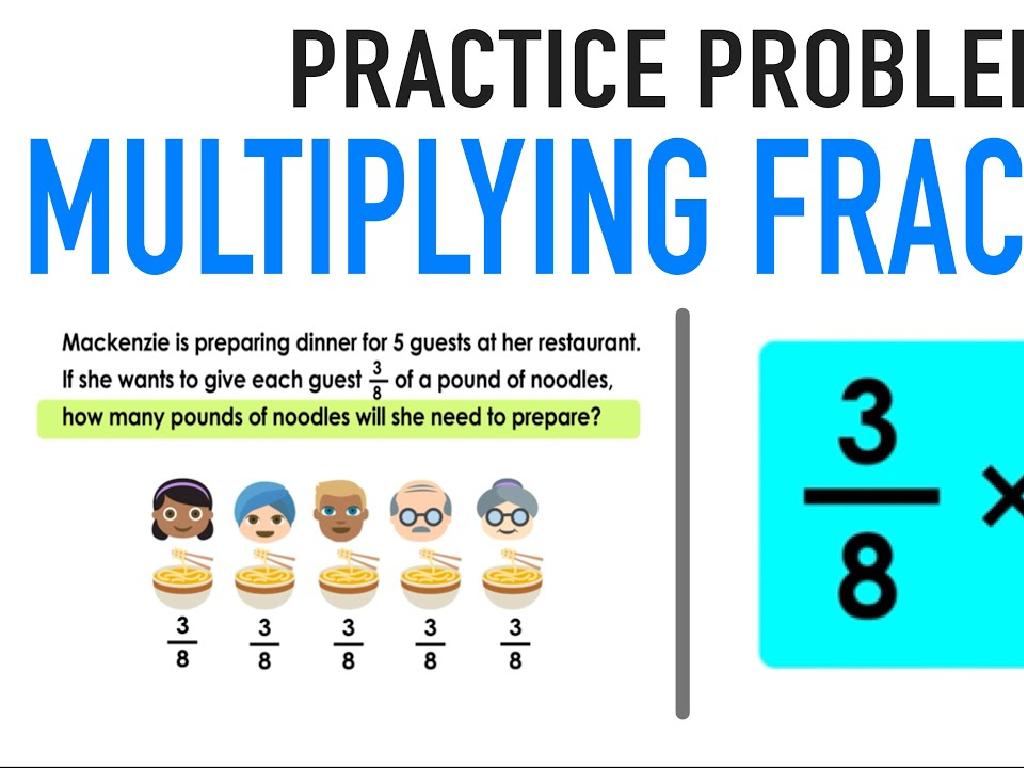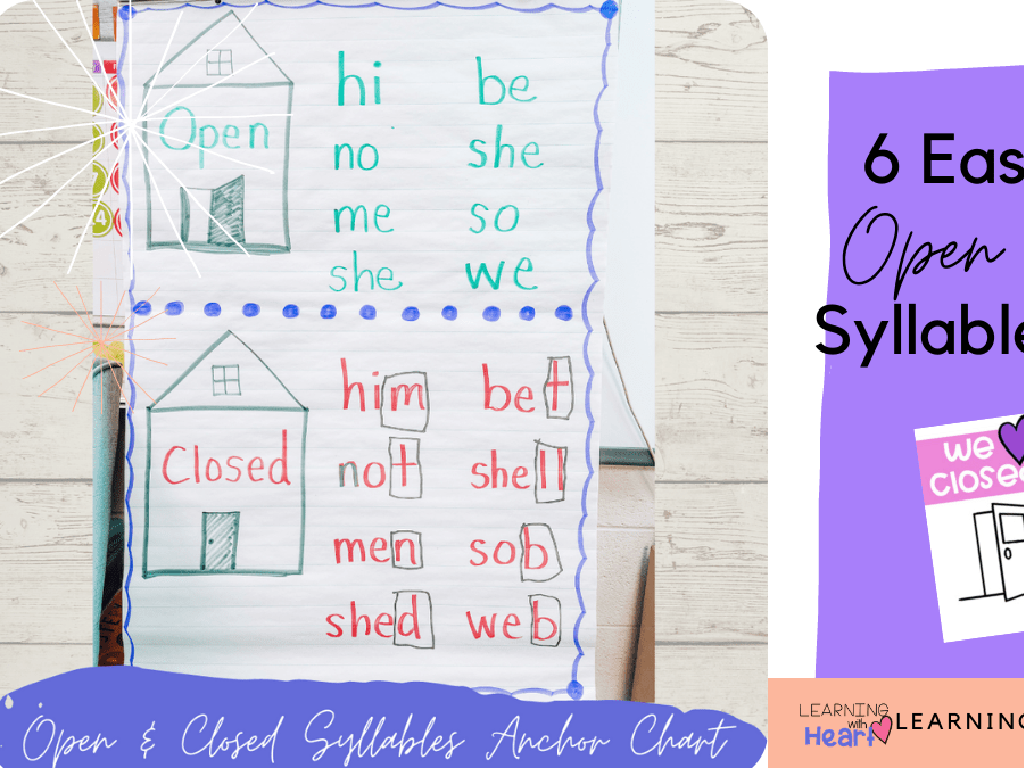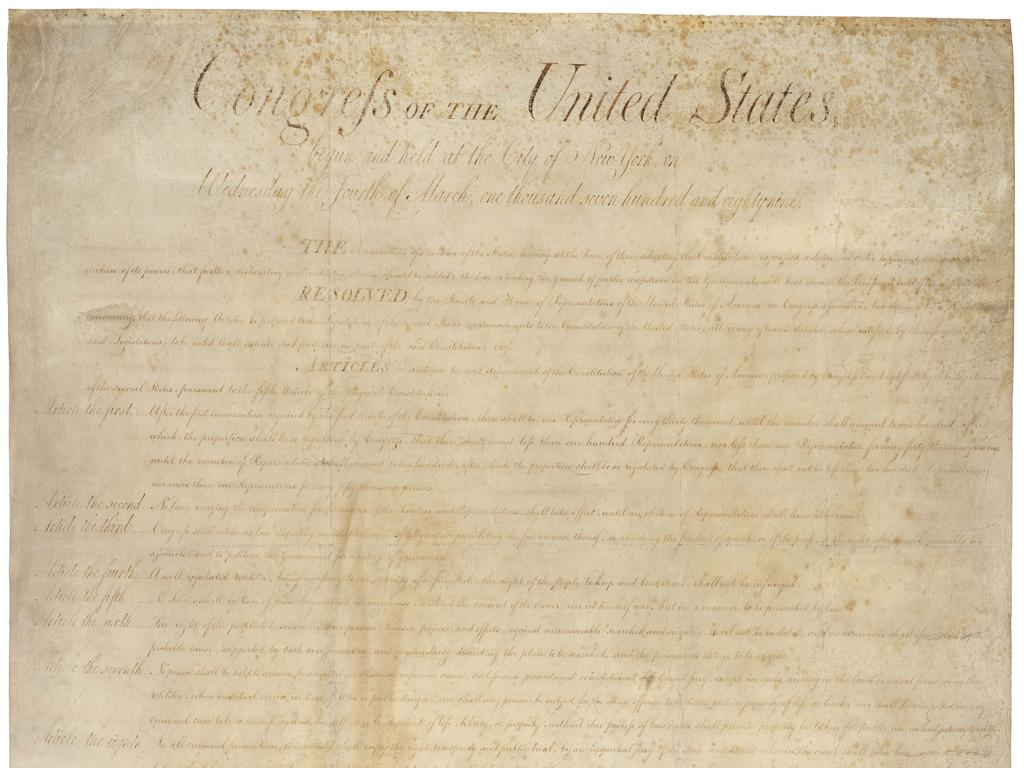Divide Using Partial Quotients
Subject: Math
Grade: Fourth grade
Topic: Divide By One-Digit Numbers
Please LOG IN to download the presentation. Access is available to registered users only.
View More Content
Introduction to Division with Partial Quotients
– Division as equal sharing
– Imagine splitting 12 cookies equally among 4 friends.
– Multiplication and Division connection
– If 4 x 3 = 12, then 12 ÷ 4 = 3 shows how many times 4 is in 12.
– What are Partial Quotients?
– It’s a method to divide by breaking into parts or ‘chunks’.
– Today’s goal: Master Partial Quotients
– We’ll practice dividing numbers step by step using this method.
|
Begin the lesson by explaining division as the process of sharing things equally among a certain number of groups, which helps in understanding the concept of fairness and equality in math. Recap multiplication as it is the foundation for understanding division; show how division is essentially the reverse of multiplication. Introduce partial quotients as a division strategy that breaks down the division process into more manageable parts, making it easier for students to solve division problems without memorization. The goal for today’s class is for students to become comfortable with the partial quotients method by practicing with various examples and understanding each step of the process.
Understanding Partial Quotients
– Partial quotients simplify division
– It’s a method to divide step by step, making it easier to solve.
– Break down division into steps
– Instead of solving all at once, we divide the number into smaller, more manageable parts.
– Manage large division problems
– Large numbers can be intimidating; partial quotients make them easier to handle.
– Why partial quotients are useful
– This method helps with complex division by avoiding long division and reducing errors.
|
Introduce partial quotients as a division strategy that simplifies the process by breaking it down into a series of easier steps. This method is particularly helpful for students who may struggle with traditional long division. By dividing a large problem into smaller parts, students can work through complex division problems more confidently and with greater accuracy. Emphasize the importance of understanding each step and ensuring that students know how to handle larger numbers by using this approach. Provide examples of how to apply partial quotients to different division problems and encourage students to practice this method.
Dividing with Partial Quotients
– Start with 36 divided by 3
– Estimate how many times 3 fits into 36
– If 3 goes into 36 about 12 times, write 12
– Subtract and find the remainder
– 36 minus 3 times 12 equals 0, no remainder
– Repeat until you subtract to 0
|
This slide introduces the concept of division using partial quotients, a method suitable for fourth graders. Begin by presenting a simple division problem, such as 36 divided by 3. Guide the students through the process of estimating how many times the divisor fits into the dividend. Emphasize the importance of estimation skills and mental math. After each estimate, they will subtract the product of the divisor and their estimate from the dividend and bring down the next digit if necessary. The process is repeated until the remainder is less than the divisor or until there is nothing left to bring down. This method helps students understand division conceptually and prepares them for more complex problems. Encourage students to practice with different numbers and to check their work by multiplying their quotient by the divisor to see if it equals the dividend.
Dividing Larger Numbers Using Partial Quotients
– Start with 154 divided by 7
– Estimate 7 into 154 times
– How many groups of 7 in 154? Start with 20.
– Subtract and bring down the remainder
– 20 times 7 is 140. Write 154 – 140 = 14.
– Repeat until you subtract completely
– If there’s a remainder, bring it down and divide again.
|
This slide introduces students to the concept of dividing larger numbers using the partial quotients method. Begin by presenting the problem 154 divided by 7. Guide students through the process of estimating how many times the divisor (7) can go into the dividend (154). Encourage them to start with a number that is easy to multiply, such as 20. After multiplying and subtracting, they should bring down the remainder and repeat the process until there is nothing left to subtract. This method helps students break down division into manageable steps without needing to memorize long division right away. It’s a great way to build confidence in their division skills.
Your Turn: Divide 81 by 9 Using Partial Quotients
– Start with 81 divided by 9
– Estimate and subtract step by step
– Think ‘How many times does 9 fit into 81?’
– Write each partial quotient
– Record how many 9s in each step
– Share your solution steps
– Explain your process to the class
|
This slide is designed for a class activity where students practice the partial quotients method of division. Students will take the number 81 and divide it by 9, breaking it down into smaller, more manageable parts. They should estimate how many times 9 can be subtracted from 81 until they reach 0. Each subtraction is a ‘partial quotient,’ and they should keep track of each step. After completing the problem, students will be asked to share their methods and thinking process with the class. This exercise will help reinforce their understanding of division and the partial quotients method. For the teacher: Prepare to guide students who may struggle with estimation or subtraction, and have additional practice problems ready for those who finish early.
Class Activity: Group Division with Partial Quotients
– Split into small groups
– Solve division problems together
– Use partial quotients method
– Break down the dividend bit by bit, subtracting multiples of the divisor
– Present solutions and steps
– Explain each step of your solution to the class
|
This activity is designed to promote collaborative learning and practice the partial quotients method for division. Divide the class into small groups, ensuring a mix of abilities in each. Provide a set of division problems suitable for fourth graders. Each group will use the partial quotients method to find the answers, which involves breaking down the dividend into smaller parts and subtracting multiples of the divisor until they reach zero or a remainder. After solving the problems, each group will present their solutions and explain the steps they took to arrive at their answers. This will help reinforce their understanding and allow them to learn from each other. Possible activities could include dividing different numbers of objects evenly among group members, solving word problems, or creating a poster that explains the partial quotients method.
Conclusion: Mastering Partial Quotients
– Review steps of Partial Quotients
– List each step we learned to divide with partial quotients.
– Understand its usefulness
– It breaks division into manageable parts.
– Q&A session for doubts
– Practice makes perfect
– Keep practicing with different numbers to get better!
|
As we wrap up, let’s go over the steps of the Partial Quotients Method one more time to ensure everyone understands the process. Emphasize the usefulness of this method in breaking down complex division problems into simpler, more manageable steps. This can make division less intimidating and easier to solve. Open the floor for a Q&A session, encouraging students to ask questions and clarify any doubts they may have. Remind them that practice is key to mastering any math concept, and encourage them to continue practicing partial quotients with different numbers to improve their skills.
Homework: Practice Partial Quotients
– Complete the division worksheet
– Use partial quotients method
– Break down the dividend bit by bit
– Attempt various problems
– Mix of easy and challenging questions
– Share your solutions tomorrow
|
This homework assignment is designed to reinforce the concept of division using the partial quotients method. Students are expected to complete a worksheet that provides a variety of division problems. They should apply the partial quotients technique, which involves breaking down the dividend into smaller, more manageable parts and subtracting those parts from the dividend step by step. The worksheet should include a range of problems, from simple to more complex, to cater to different skill levels. Encourage students to try their best and remind them that the goal is to understand the process, not just to get the right answer. In the next class, students will have the opportunity to share their work and discuss any challenges they faced, which will help them learn from each other and clarify any misunderstandings.





